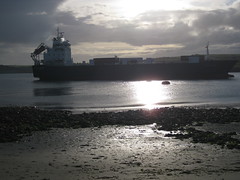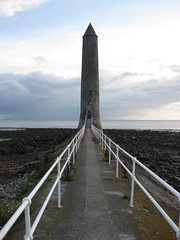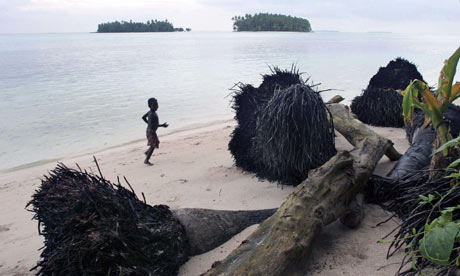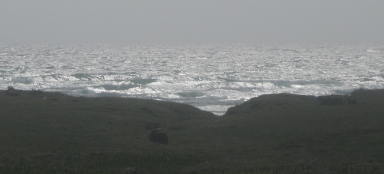 Friday morning at 9am saw me at the ferry queue in Scarinish waiting for the Tiree–Oban ferry, saying goodbye to Fiona and to Tiree as I won’t be home again for most of the next two months. Friday is an early ferry — 5am check-in for those coming from Oban, but a more civilised time for going to the mainland and a 1pm arrival gives plenty of time to get down to Troon for the 8:20pm ferry.
Friday morning at 9am saw me at the ferry queue in Scarinish waiting for the Tiree–Oban ferry, saying goodbye to Fiona and to Tiree as I won’t be home again for most of the next two months. Friday is an early ferry — 5am check-in for those coming from Oban, but a more civilised time for going to the mainland and a 1pm arrival gives plenty of time to get down to Troon for the 8:20pm ferry.
I’ve never taken the Troon–Larne ferry before, always travelling to Ireland from Stranraer in the North or Holyhead in the South. However, arriving with a full three hours to spare, I found it is a good place to wait, eating a late picnic lunch of pork pie and salad overlooking the bay with windsurfers and kite surfers along the strand, home from home.
Long distance ‘commutes’ and remote relationships have become common amongst professional workers. I recall Richard Bentley at one stage working in Germany while his partner was in Jersey, and in the States several West-Coast East-Coast marriages. However, this is not a recent phenomena, on Tiree there are families of trawler men or those working on the North Sea rigs, where ‘going to work’ means many weeks or months away. The ‘Express’ Troon–Larne ferry fairly sped along compared with Calmac’s more leisurely vessels, and as I sat and watched us pass Ailsa Craig, struck up conversation with a man on his way home to his wife and family after three months away doing forestry work in Scotland.
Larne, like Crewe, is a place you pass through and rarely stop, but given the late ferry I ended up spending a night there in a small seafront guesthouse, Beach Vista. The late arrival of the ferry was compounded by a wrong turning1, but despite the late hour Bob the proprietor was waiting with a warm welcome in a rich Northern accent. My childhood images of Northern Ireland are all from news stories of ‘The Troubles’; amidst these images of sectarian violence and bomb blasts, it is easy to forget the warmth of the people and the beauty of the countryside. So I spent a first peaceful night, hearing the sound of the waves lapping against the sea wall.
Walking along the seashore before breakfast, watching a freight ship glide quietly into port past the James Chaine memorial tower, I understood some of Bob’s love of the place. “Sometimes when my wife and I go away on holiday”, he told me, “we sometimes just wonder why, when we have this at home”. Despite being less than an hour from Belfast, the pace of life is clearly somewhat slower in Larne. Bob, as well as running the B&B with his family, also has a Taxi firm, and explained that, just like on Tiree, he doesn’t worry about locking the taxi and even leaving the keys inside.
next Into the West — Larne to Westport
- why can’t Google maps include a scale on the printed maps![back]






